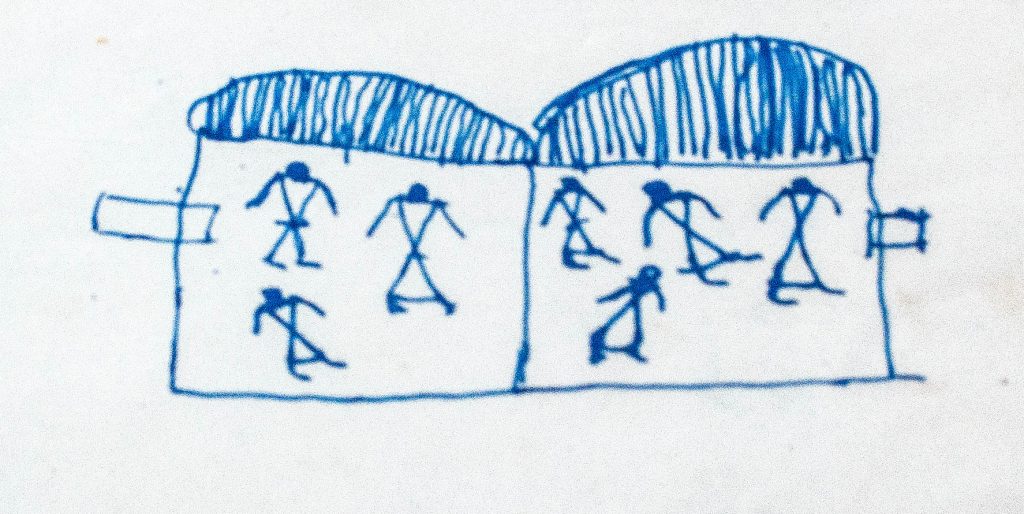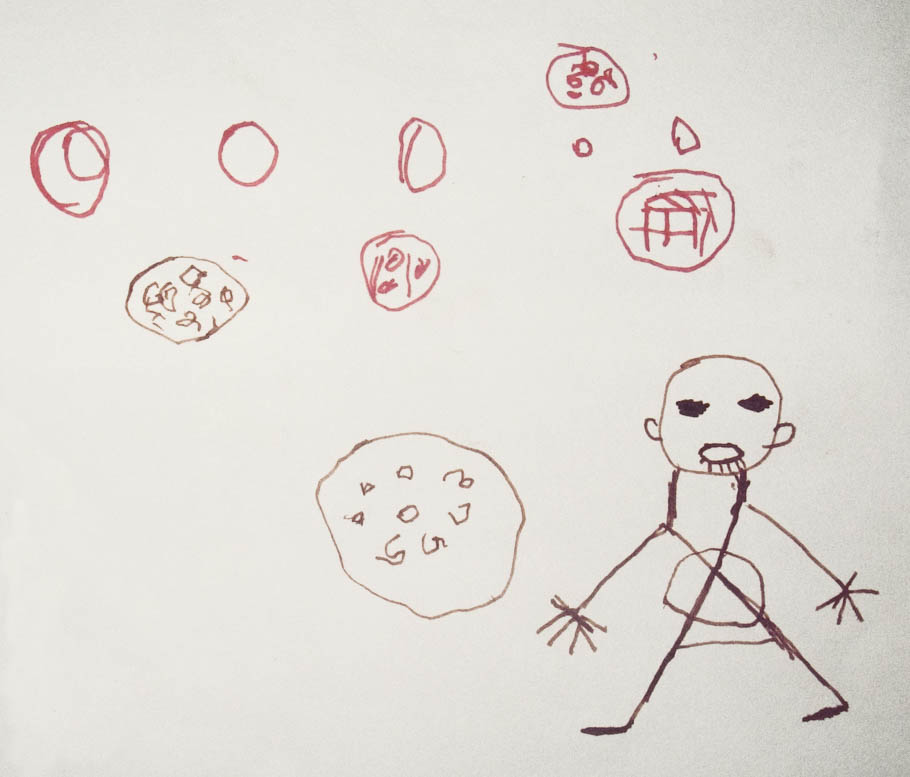TASK: Bring evidence of all the visual work you’ve done so far together in one document. This should include a summary of what your visual work is trying to do with an explanation of how it links to your data collection and your research question. If you’ve modified your research question in the light of your data collection, clearly state your revised research question and explain why you decided to change it.
Note from Course Text: Aim to produce a substantial amount of visual exploration and developments. Don’t leap to final conclusions yet: you are still at a divergent stage of the design process, although some convergent elements might start to creep in. This is still a stage of visual risk-taking and trying lots of different options. Don’t spend ages on final pieces – work on a range of options that are still mock-ups.
SUMMARY
My work on my visual portfolio in Assignment 3.2 was limited to development of basic skills in animation and preliminary style and software exploration on iPad. Because of my RSI I needed to develop an animation workflow that did not require me to sit for long periods at my pc in order to get a better understanding of basic animation principles before transferring to more professional software like Adobe Animate. In Assignment 4, and also 5, my main focus will be more developed animations in professional pc software for my visual portfolio and detailed discussion of the most relevant sources of inspiration. My visual work in this assignment was primarily exploratory to:
1) Explore some of the ways in which the original community visuals could be adapted and used
2) Establish a range of potential animation styles that I could feasibly apply to story lines on the iPad within the time-frame of this module, based on inspiration from contemporary animation and study of work on animation techniques and other animators whose style I like.
a) Identification and practising drawing and cartooning principles behind stick figure and simple animation.
b) Preliminary iPad experimentation with animation techniques from my iPad animation software review (Procreate 5 that I knew already and new animation software) to see how I could translate animation inspiration from my data-collection into my own animations.
The main results are a clear story-line plan for two translation sets of very short animation variants in a range of different animation styles that are feasible for me to review and develop to a much more professional standard in Assignment 4: Making Lines Talk.
1: Community visuals
I explored some of the ways in which the original community visuals could be adapted and used, particularly line styles, methods of figure abstraction and manipulation to show emotions, how women/men characters can be differentiated building on ways in which people in different communities and contexts do this, and different cultural styles. To enable me to animate with conscious use of any stereotypes in ways that provoke questioning, and building on types of humour and visual conventions already familiar to people.
This proved potentially never-ending, and I stopped (early) when it started to become repetitive. I focused my own drawing on freehand copying drawings from India and Pakistan in biro, pen and marker to get a feel for how the drawings were done and look at some of the contrasting styles of figure abstraction.
I also looked at narrative photo sequences from drawings and role plays in DRCCongo and Uganda as examples for future animation as well as rich resources for drawing women and men in a more figurative style and/or where the community narrative was clearly developed. For more detail see:
Through this process I identified a three series of story lines to develop in multiple versions for testing with audiences. I will revisit the community visuals in detail as I develop the creative translations in Assignment 4: Making Lines Talk.
‘Tupa Tupa’ : who gets the coffee money Farmer stories from DRCCongo
‘Tupa Tupa’ means drinking/drunkard. The idea is to combine the two role play photo stories into one. And experimenting with the sequencing of the storyline – as in Matt Madden’s 99 Ways to Tell a Story. This would be done combining physical drawing and painting on photos and/or rotoscoping over the drawings and/or photos, cropping them to add drama. Possibly I might do some cut-out and collage in the style of Sarah Fanelli. Certainly I want to retain the colours and expressions. Good sequencing and framing, focusing on the very expressive faces, should make it possible to tell the story without text or words. I would have to think about sound – possibly one of the GALS Swahili songs and/or sound effects.
This series – as it is in the form of photos – was not developed in Assignment 3.
What happened to my airplane? Women’s voices from Pakistan




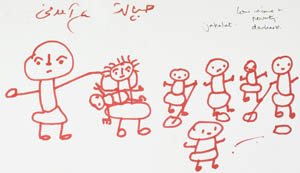


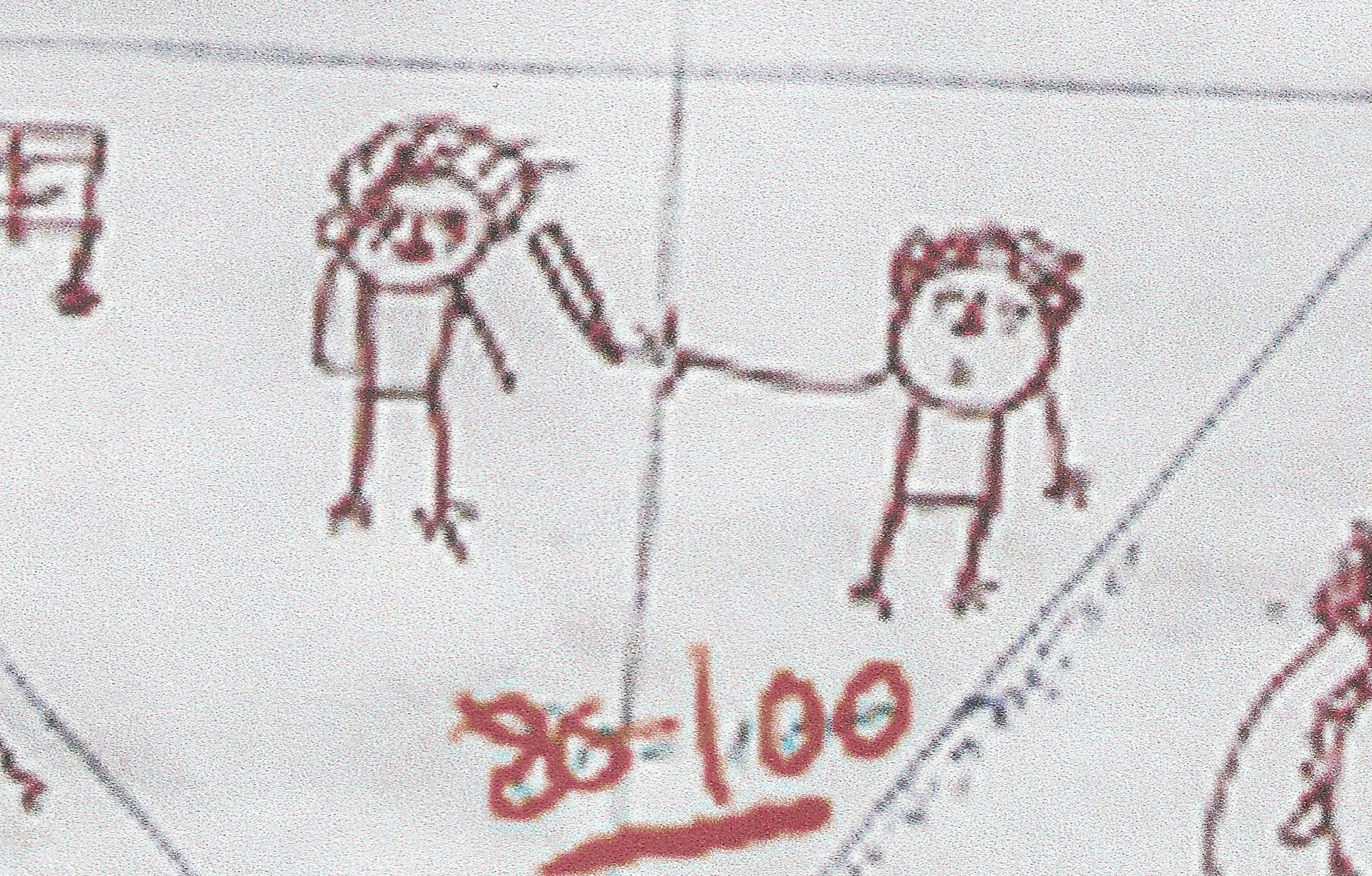
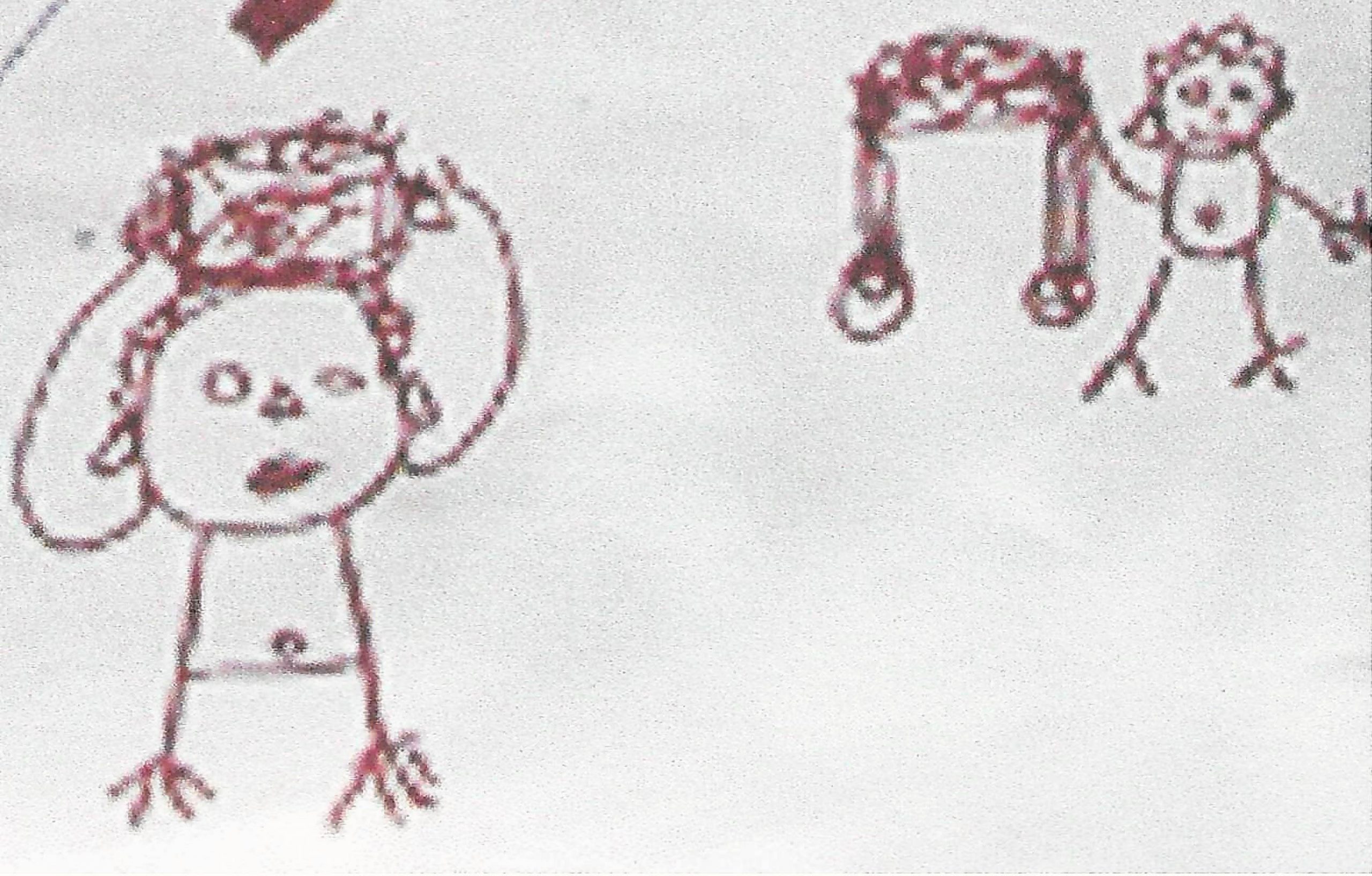

A series of different translations around the big gap between women’s dreams and visions, and the realities of violence and suicide. This will be done in a number of different versions: simple line black and white style, colour cartoon and fuller colour with masking.
2: Exploration of stick figure drawing and cartooning principles
I wanted to explore potential drawing and animation styles that were effective but also simple enough for me to feasibly apply to story lines on the iPad within the time-frame of this module, based on inspiration from contemporary animation and study of work on animation techniques and other animators whose style I like. I then practised some of the techniques identified. But as this was potentially a never-ending process – life-long I hope – I did not pursue this too far at this stage before working on specific translations with a clear purpose.
I started by identifying and practising some of the drawing and cartooning principles behind stick figure and simple animation using standard cartoon guides (!! refs to be inserted), and also looking at the work of STIK.
I started Sketchlook 3: Animation Doodles (A4 old ‘scruffy’ lined exercise book with gouached pages over old text) for me to freely practise my own character animations and just ‘doodle’ as I explore different styles and ‘think outside the box’. I was particularly interested in what happened when my spontaneous quick drawing doodles produced random expressions compared to what happens when I purposely try to depict a particular expression. And how I can link the two in a learning process without tightening up. In Assignment 4 I want to work much larger and do this more freely still.
I also started to look at facial expressions of women and men from different parts of the world so that my animations are better able to question/avoid stereotypes.

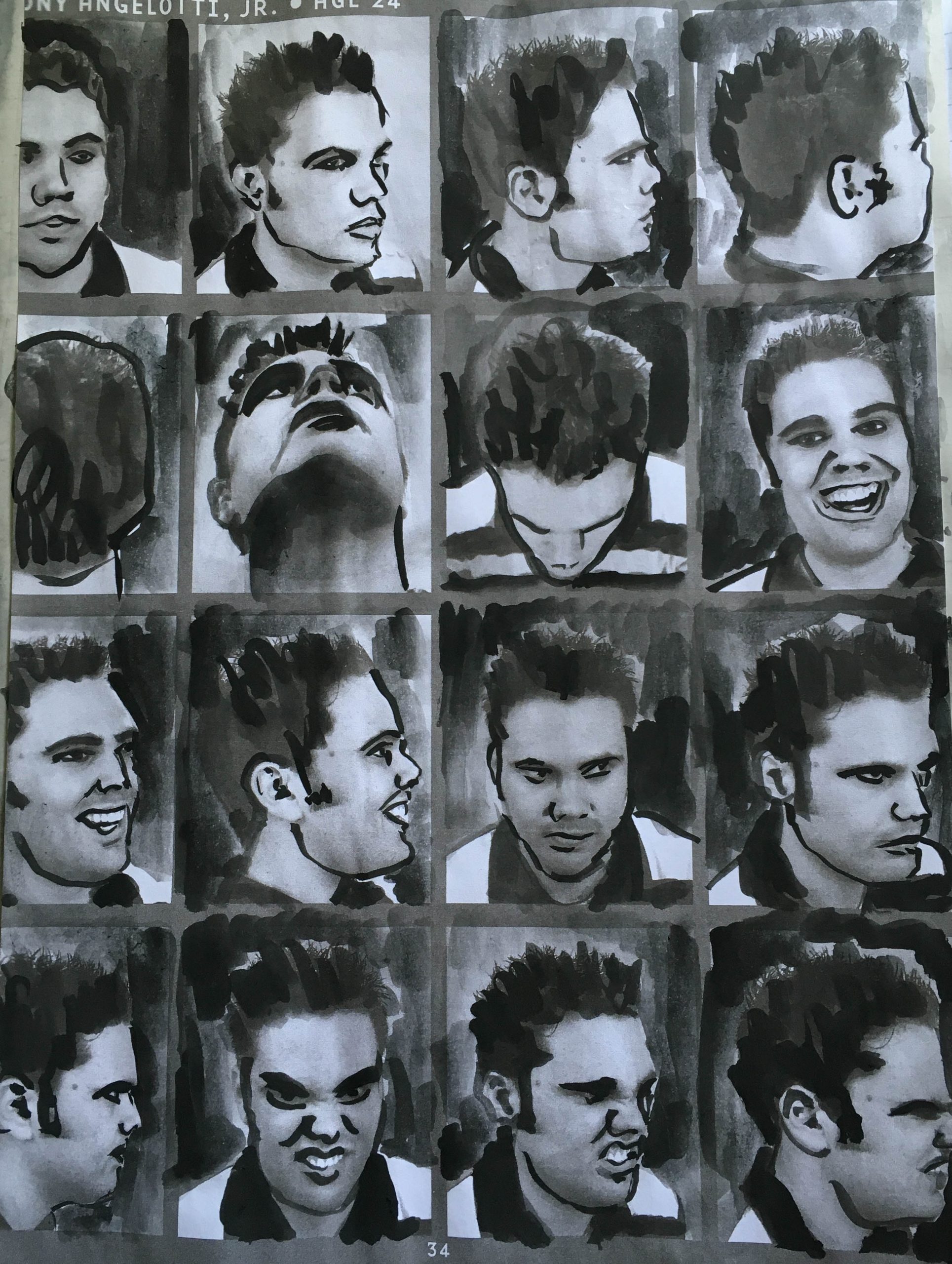



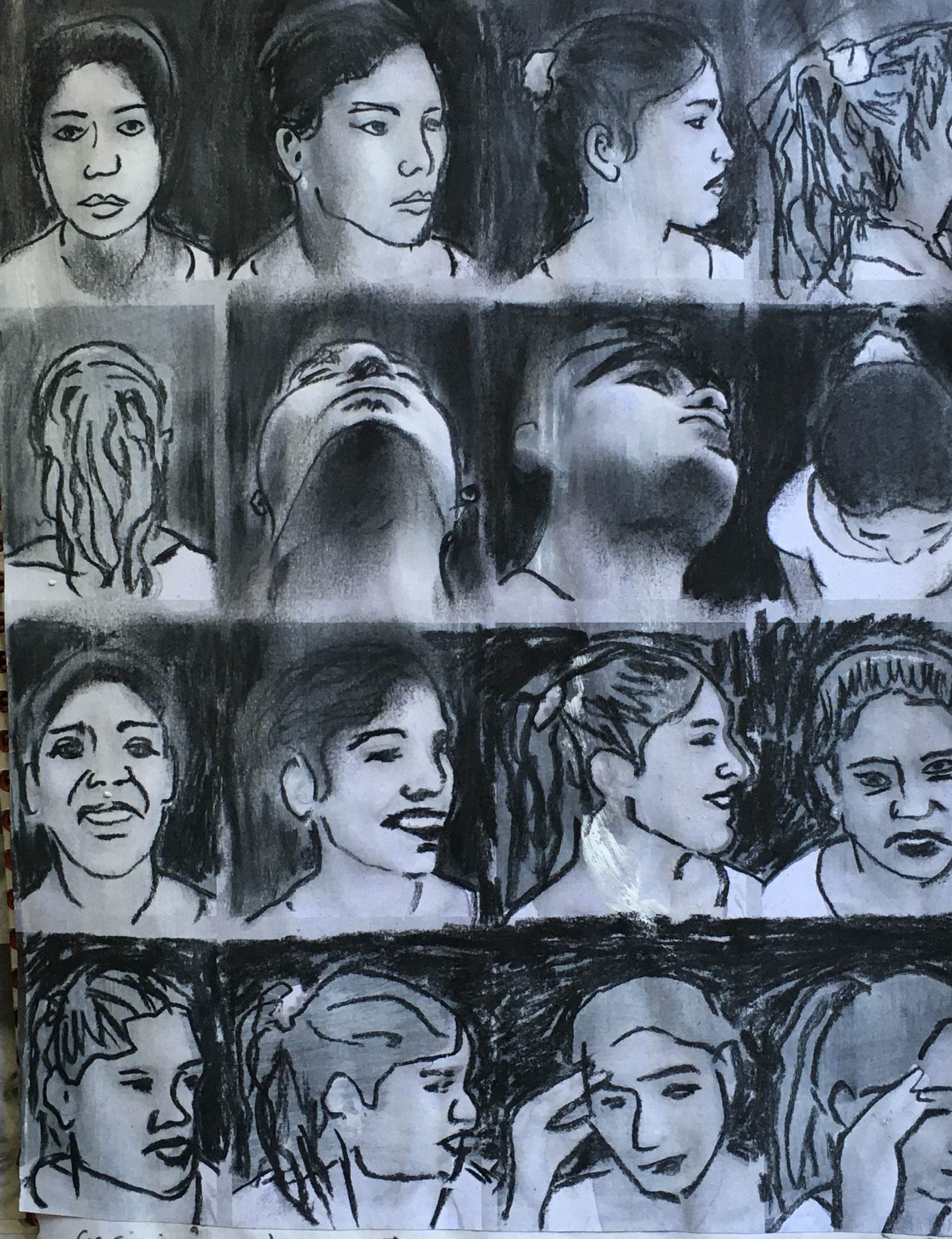

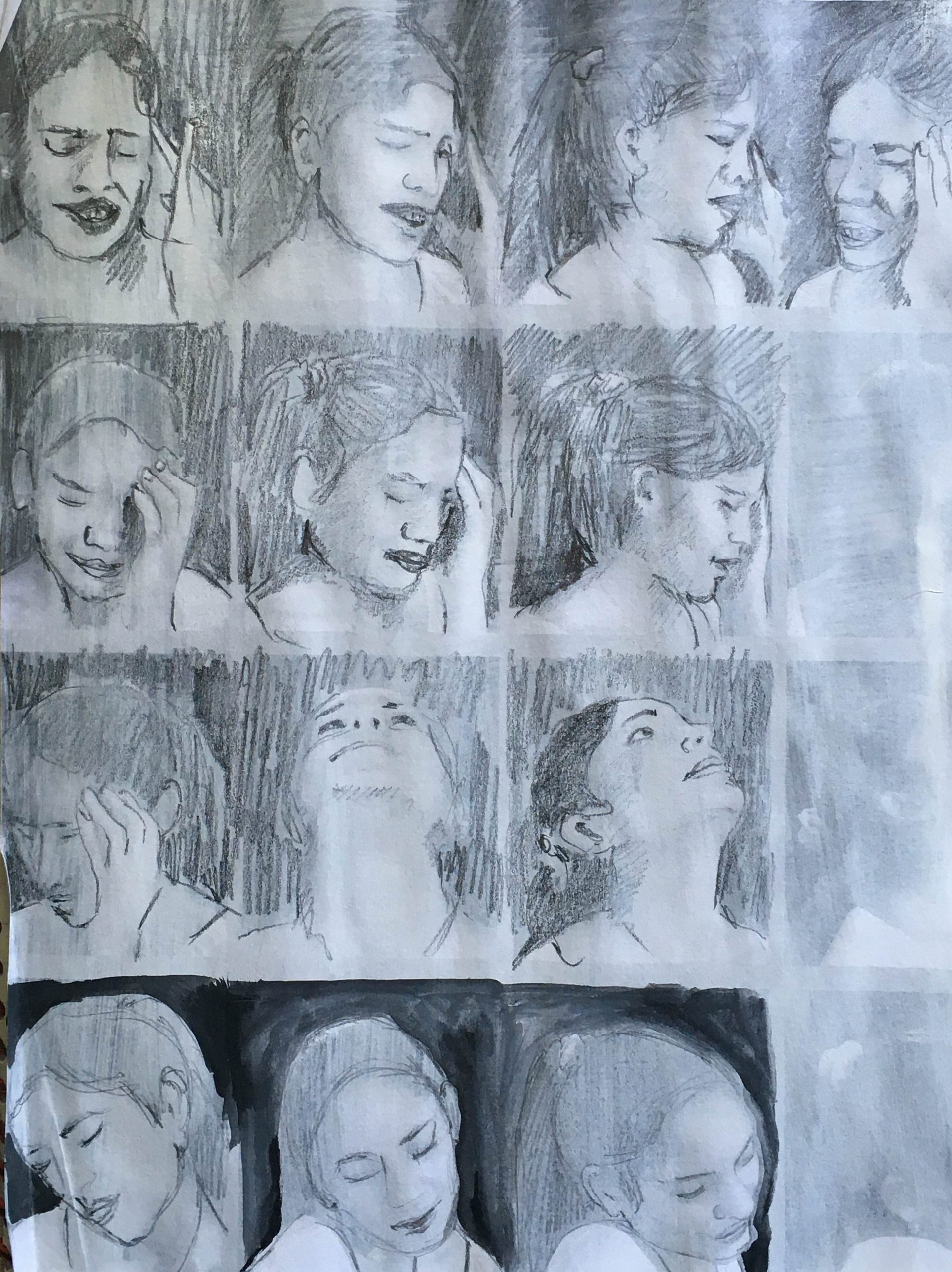
iPad animation
I also started to experiment with the iPad software I had reviewed in:
iPad animation software review
to start to identify which software might be best suited to my animation ideas.
Again this exploration was potentially a lifelong project. So I did not go too far in this assignment, leaving much for Assignment 4 when I can experiment in a more focused way with specific creative translation storylines. I did however start to get more familiar with quick animation, and some idea of the different possibilities and styles.
MotionBook
MotionBook produces quick Flipbook-style animations. There are only 4 brushes but you can alter the line thickness, opacity and colour. No layers except a fixed background (where you can import a photo) and one animation layer. The timeline is quick to add, subtract, duplicate, delete and move frames around. It can export the animation as frames into Procreate for further development, as well as animated gifs and MP4.
Procreate 5
For simple cel animation. Here you can take advantage of all Procreate’s drawing, painting, selection, effect and masking etc features. You can have many layers in each frame, as well as designated background and foreground layers. And import photos and video. Layers can be blended and masked.
The timeline is a bit clunky for complex animation with lots of elements because it is separated from the layer menu. Buy you can export from here to Rough Animator
Rough animator
Preliminary animations and walk cycles
Series 1: Goats India
Just double the frame rate. This is too fast unless I use the increased framerate to vary the length of individual frames to create more movement variation, and lengthen the movie as a whole.
Duplicating and flipping the goat layer to give mirrored goats. 12FPS is quite a good speed.
A different animation to see how I could vary the movement.
Series 2 Woman crying
Animation of first Photo coloured and simplified. Uses selection tool and painting to adjust the cracks in the animation.
Series 3 Pig Woman
Using a photo as the source I drew over the photo and coloured it, then used selection, transform and drawing to animate it into a short vignette.
Drawing over the colour animation in a pressure sensitive pen, and filling in with white where necessary. This gives a more fluid drawing.
Animation of first Photo coloured and simplified. Uses selection tool and painting to adjust the cracks in the animation. Purple background gives a sadder feel.
Colouring over the line with crayon on the woman, and paintbrush on the pig and background to make a more cartoon effect.
Toontastic
A stop motion lego puppet animation programme with audio and scenes. Can be used by children. But with a bit of practice this can be used to produce some very comic animations.
Features to get used to, practise and plan:
- the action is live so you have to practise several times to get things right
- audio is live recording, so you have to be careful about background noise
- you can only move one character at a time
With a bit of practise, skill and good storyline, this could produce some very comic animations in childlike style eg on leadership.



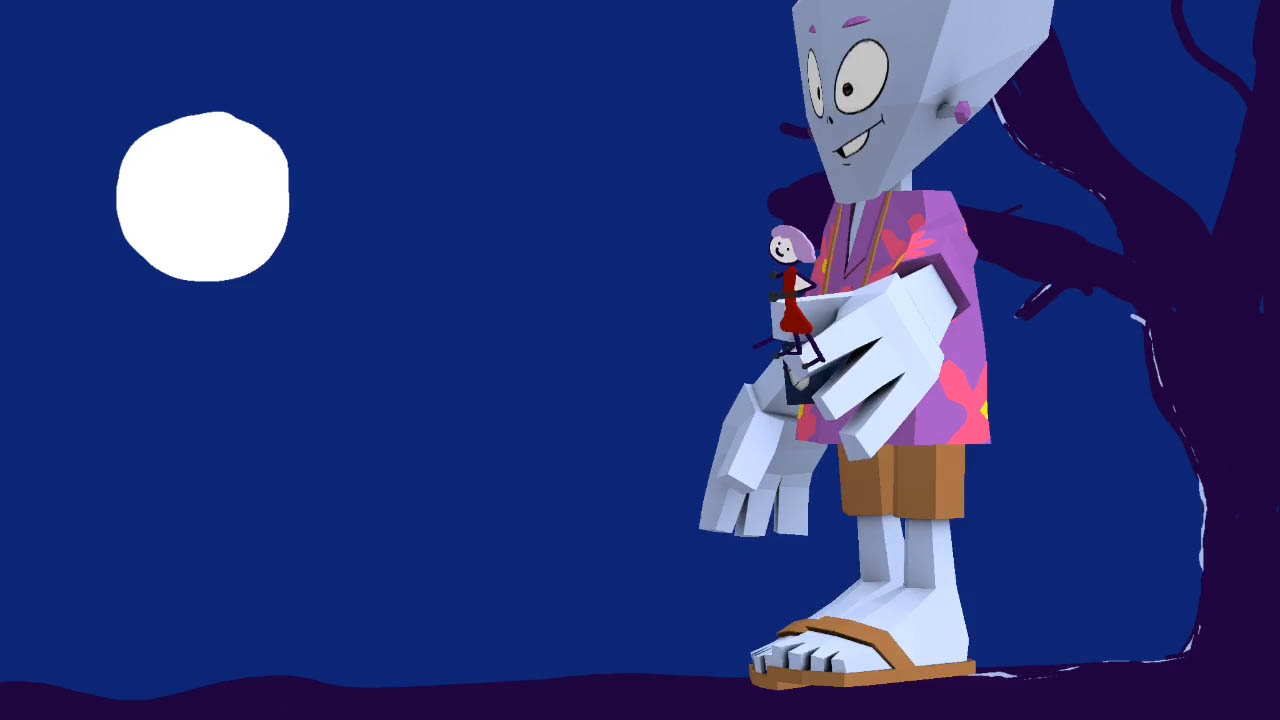
Reflection
After Assignment 3
Notes on how I think my visual work so far meets the assessment criteria:
- creativity: I have only just scratched the surface of what is possible. But the experimentation can become quite repetitive unless I have a clearer narrative focus. For Assignment 5 I will revisit these drawings – possibly the above vignettes, but more likely some new narratives eg a pig fight, a longer narrative using more of the Uganda drawings and a longer narrative around women and men’s perceptions of empowerment in India.
- research and idea development: again I have only scratched the surface. But will further develop ideas and themes in Assignment 5. I still need to assess all my visual work in relation to the creative translation theory questions I identify and develop these questions further.
- visual and technical skills: I came to this with very limited animation experience, apart from some video in Flash. This was the reason why I wanted to develop animation skills in this Research Module. I think I have made quite a lot of progress from a very low base. I am planning very intensive work on both narrative and visuals in Assignments 4 and 5, now I have established the basics.
- context: my animations so far have been mostly attempting to recreate the community drawing styles, or animating photographs. I will be applying styles from other animators in Assignments 4 and 5.
For Assignment 4
Reading through the course material again after a gap, I noted that I was asked to work across multiple media. This was also part of my decision to focus much more on in-depth experimentation with physical as well as digital media, but with a narrower range of primary source data sets. Having thus re-focused, I came to see some new possibilities:
- Creativity: I revisited the work on creative process I had been doing for VC Advanced Practice as the basis for a much broader experimentation of a wider range of translations of the same narrative.
- Research and idea development was significantly widened to include approaches and styles that I really like and enjoy, beyond more conventional digital styles.
- Visual and Technical skills focus on a workflow that has TVPaint at its centre, but includes physical media and iPad experimentation in Procreate.
- Context was significantly broadened to new approaches by following up threads from Moving Image 1 and Discord discussions on my Howard Wimshurst course. This reinforced my bricolage approach, as many of my discoveries were serendipetous, partly from Google or You Tube generated ‘additional suggestions’ on animations that I had purposely searched for following recommendations. This serendipity then became the focus for a further set of purposive searches.
Resulting plans for creative translations from Assignment 3
As noted above, most of my time on this assignment was spent in developing a visual repertoire of ideas and inspiration from the community drawings and role plays and the work of other animators and illustrators (See links in the menu below).
My visual portfolio for this Assignment was very limited and preliminary because the process become repetitive and mechanical without a clear focus on narrative and story-line. As a result of my research and visual experimentation I have identified ideas and story-lines for two translation sets:
I anticipated that most of my time in Assignment 4 will now be on developing my visual portfolio from these translation ideas. This will include drafting the animations on the iPad, but transferring these to Adobe Animate and/or After Effects in order to get better fluency and combine scenes into an overall narrative.
Changes in Assignment 4
By Assignment 4, following more in-depth work on animation techniques and approaches, my interests had broadened considerably. I therefore followed my tutor’s advice to focus more on particular sets of primary sources.
Between VisRes A3 and A4 the COVID pandemic struck, necessitating changes to my plans for Visual Communications Assignment 4 to produce an audience-based body of work to ‘make the world a better place’. I thought that the work I had been doing on Africa so far in this VisRes module would be very well suited as sequential narrative and animation in Adobe Animate as part of an advocacy-focused body of work on the coffee industry, together with other material from my professional work.
At the same time I had progressed with work on Moving Image 1 as a personal development course, experimenting with Stop Motion and animation of natural materials. I was also progressing with a practical course with independent animator Howard Wimshurst using TVPaint that enabled manipulation of natural media images.
So as a result of both these developments, I for a while decided to focus in much more depth on India and Pakistan that offered more than enough primary source material for very significant ‘creative translation’ experimentation across a range of animation approaches. Rather than becoming diverted by too many different narratives. And focus in this Module on TVPaint and ‘material performances’, as well as continuing to use Procreate on my iPad for some of the image creation.
See:
- Animations 1: ‘Pig Tales’ and other stories, India
- Animations 2: ‘What Happened to my Airplane’, Pakistan
But these plans were changed in Assignment 5 to encompass work on all 4 creative translations.








